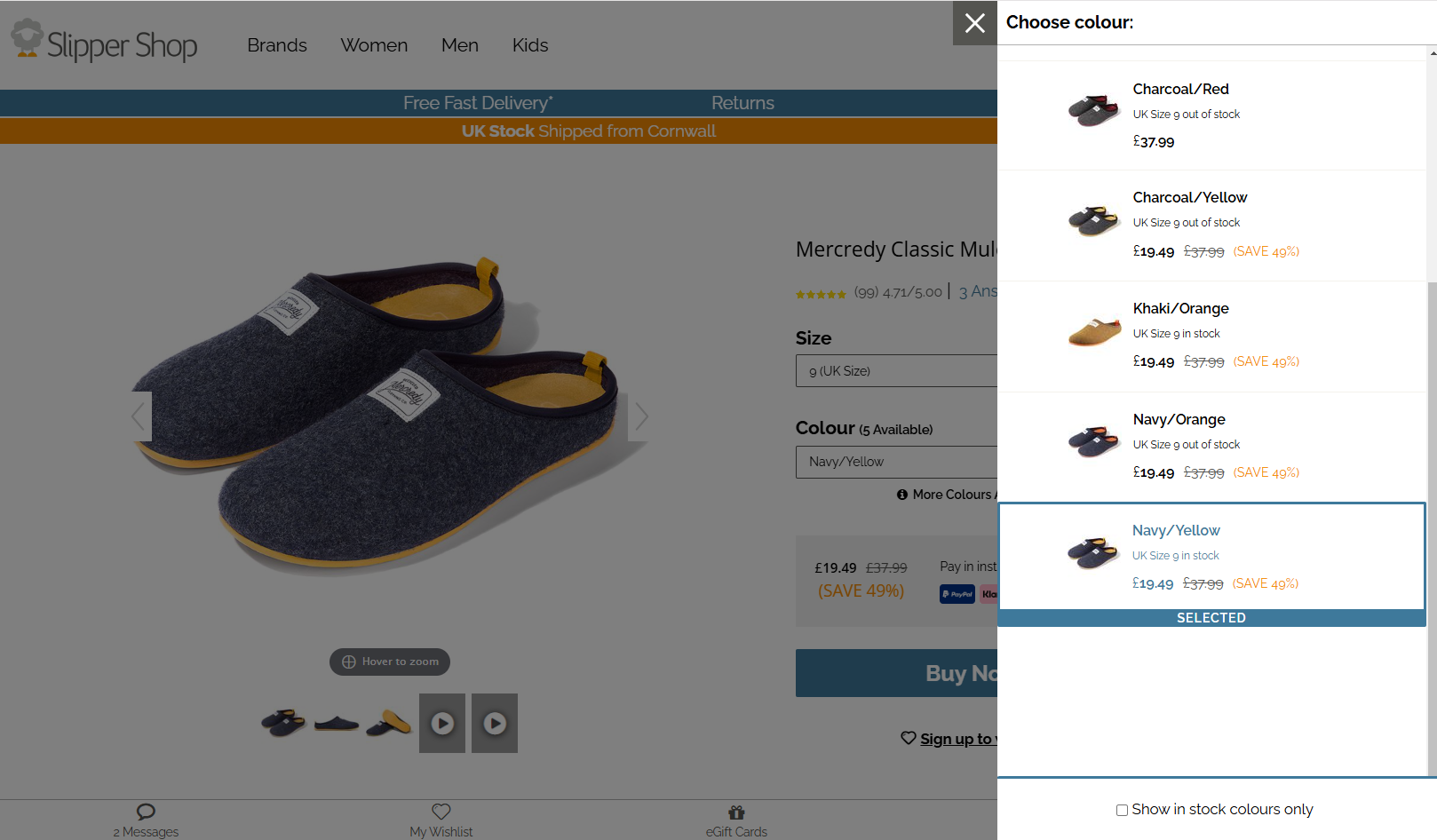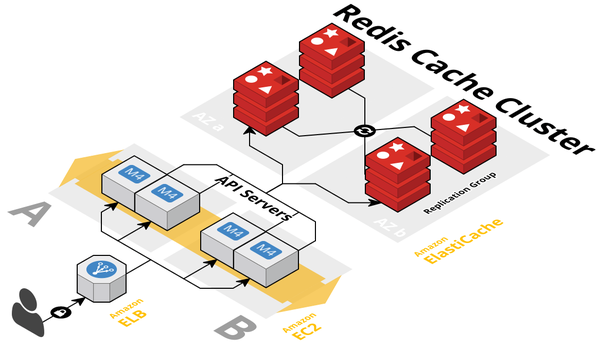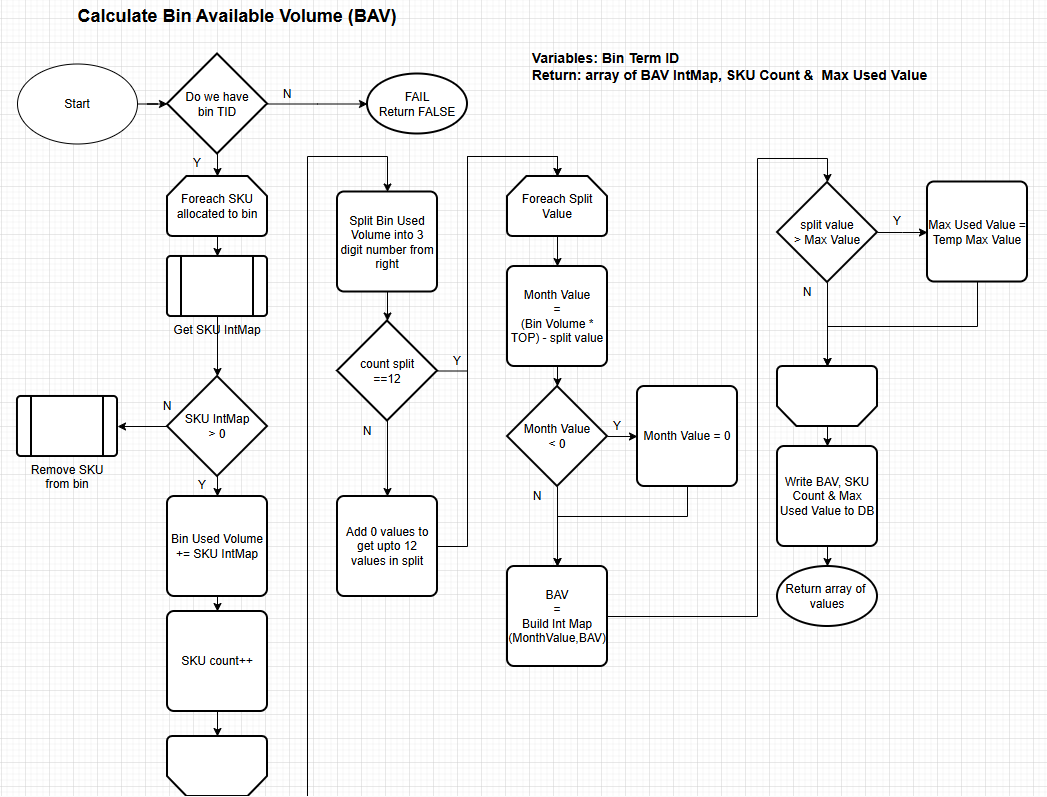Copyright © 2025 Zac Hillier. All rights reserved.
Hi, I'm Zac!
System Architect, Software Engineer
& Creator
I’m a UK-based software engineer with over 25 years of experience building for the internet. From code to creativity, I turn ideas into systems that work like magic, designed to evolve simply with your needs.

Zac Hillier
Software Engineer & System ArchitectI’m a UK-based software engineer with over 25 years creating solutions for businesses online, more than 20 years in PHP and well over a decade of delivering ecommerce, warehouse and infrastructure systems. My work revolves around creating clean, structured code that prioritizes long-term maintainability and adaptability, ensuring systems can evolve seamlessly with business needs.
My experience in creating solutions with Drupal dates back to 2012, with Laravel becoming my choice of framework focus from 2021. I excel at building scalable, user-focused platforms. From streamlining complex workflows to enhancing operational efficiency, I’m passionate about developing solutions that empower businesses to perform at their best.
Efficiency, precision, and forward-thinking design are at the core of everything I do. Whether crafting tailored systems for inventory management or enhancing online shopping experiences, I’m dedicated to delivering robust, future-proof applications that meet and exceed expectations.
- Hobby Martial Arts, Kayaking, Sailing
- Band Pearl Jam, Twenty One Pilots
- Destination Patagonia, Sea of Cortez
- Inspiration Ernest Shackleton, Paul Graham
-
OWASP, Design Patterns, SOLID, MVC
Use -
PHP, JS, TS, SQL, Vue, SCSS, YAML, TWIG
Write -
Laravel, Drupal, Livewire, Alpine, Inertia
Like
Everything about me!
-
 2010 - 2025JamHill
2010 - 2025JamHillFounding member, lead developer and system architect for £2M pure play ecommerce business. With a dedicated operating system that managed seven customer websites and automated order fulfilment and all warehouse operations.
Building JamHill Ltd.: My Role in the Journey
In 2010, I co-founded JamHill Ltd. with a vision to create a successful e-commerce business. What started as a small venture focused on a niche product—flip-flops—grew into a multi-million-pound enterprise with a dedicated warehouse, a skilled team, and an impressive portfolio of seven customer-facing websites. My role in this journey was pivotal, blending technical expertise, leadership and a drive for innovation to design and implement the systems that powered every aspect of our business.
From Concept to Execution
JamHill began with a single website selling flip-flops. The idea was straightforward: target a specific market and deliver exceptional customer experiences. However, turning this vision into a reality required robust systems and an infrastructure that could scale. As one of the two founders, I took on the responsibility of building the IT backbone of the company.
The initial website was just the beginning. I recognized early on that for JamHill to grow and compete in the fast-paced world of ecommerce, we needed to create a seamless, integrated ecosystem. This required a mix of technical expertise, strategic planning and the ability to adapt to the rapidly changing landscape of online retail.
Designing and Building the Systems
One of my primary contributions to JamHill was designing and building all the IT systems. This included the seven customer-facing websites that formed the core of our business. Each site was tailored to meet the specific needs of our customers, ensuring an intuitive and engaging user experience. These sites were not just sales channels; they were key touchpoints for building relationships with our customers and driving brand loyalty.
Behind the scenes, I developed an extensive array of systems to manage the operational side of the business. These included:
Stock Management: A system to track inventory in real time, ensuring accurate stock levels across all channels.
Order Fulfillment: Streamlined processes for picking, packing, and shipping orders, reducing errors and improving efficiency.
Returns Processing: Automated workflows to handle returns quickly and accurately, enhancing customer satisfaction.
Purchase Order Management: Tools to manage supplier relationships, track incoming stock, and forecast purchasing needs.
Cash Flow Monitoring & Forecasting: Systems to ensure financial stability and informed decision-making.
These systems were designed to work together, creating an efficient and scalable infrastructure that supported the company’s growth.
Innovating in Pricing and Marketing
One of the key challenges in ecommerce is staying competitive in terms of pricing and marketing. To address this, I developed sophisticated tools that gave JamHill an edge:
Price Monitoring and Repricing Software: This allowed us to track market demand, available supply and competitor prices in real time and adjust our own pricing dynamically. By staying competitive without sacrificing margins, we were able to maintain strong sales even in highly competitive markets.
Marketing Systems: I built a suite of marketing tools to drive customer acquisition and retention. This included email marketing platforms, integrations with the Google AdWords API for automated campaign management, and customer relationship management (CRM) systems. These tools enabled us to run targeted, data-driven campaigns that delivered measurable results.
Customer Self-Service Area: To enhance the customer experience, I developed a self-service portal where customers could manage their accounts, track orders, and initiate returns. This not only improved customer satisfaction but also reduced the burden on our support team.
Leading a Team of Innovators
As JamHill grew, so did the complexity of our operations. Recognizing the need for additional expertise, I assembled and led a team of four talented individuals. Together, we worked on IT systems, marketing, and product data, constantly improving and expanding our capabilities.
My role as lead developer involved more than just technical work. It required strong leadership and communication skills to ensure that the team was aligned with the company’s goals. I mentored team members, provided guidance on projects, and fostered a collaborative environment where innovation thrived. Our work was instrumental in scaling the business to meet increasing customer demand while maintaining high standards of service.
Scaling Operations to Meet Demand
By the time JamHill reached its peak, the business had grown to employ 11 people and operated out of a large dedicated warehouse. This facility was the hub of our operations, handling the fulfillment of orders for all seven websites. The systems I built were integral to managing this complex operation efficiently.
From goods-in processes to real-time stock updates, every aspect of the warehouse was supported by the IT infrastructure I developed. This ensured that orders were fulfilled accurately and promptly, even during peak seasons when demand surged.
Reaching New Heights
Underpinned by the systems and processes I designed, JamHill achieved remarkable success. At its peak, the business generated £2 million in annual revenue. This growth was a testament to the strength of our vision, the dedication of our team, and the power of technology to drive efficiency and innovation.
Looking back, I take immense pride in the role I played in building JamHill. From designing the IT systems that powered our operations to leading a team of innovators, every challenge was an opportunity to learn and grow. The experience of transforming a small e-commerce business into a thriving enterprise is one that I will always value.
Conclusion
Building JamHill Ltd. was more than just a professional achievement—it was a journey of creativity, collaboration, and perseverance. As a co-founder and lead developer, I had the privilege of shaping the company’s direction and driving its success through technology. The lessons I learned along the way continue to inform my work, inspiring me to take on new challenges and build systems that make a difference.
-
 2005 - 2010International Laser Class Association
2005 - 2010International Laser Class AssociationI led the digital transformation at the International Laser Class Association, modernizing systems for 50,000+ global members and streamlining championship entries to meet diverse needs.
Systems Development – International Laser Class Association (ILCA)
As Operations Manager for the International Laser Class Association (ILCA), I was tasked with driving a comprehensive modernization initiative to overhaul the association’s operational and technological infrastructure. ILCA, a global organization with over 50,000 members across 50+ countries, serves a diverse and vibrant community of sailors. My role focused on creating efficient, secure, and user-friendly systems to streamline membership management and championship event processes, addressing long-standing challenges in an organization with complex international requirements.
Modernizing Membership Systems
One of my primary responsibilities was to replace the outdated membership system, which heavily relied on paper-based and faxed documents. The legacy system was cumbersome, inefficient, and prone to errors, creating barriers to membership engagement and administration. I spearheaded the design and implementation of a fully digital, centralized membership system.
The new system allowed members to easily register, renew memberships, and manage their information online. Key features included:
Parental Approval Mechanisms: Given that a third of the membership was under 18, the system incorporated processes for parental consent, allowing parents or guardians to review and approve applications.
Data Security Compliance: Ensuring personal and medical data security was critical. I developed workflows to provide championship organizers with the necessary participant information while maintaining compliance with privacy standards.
Language and Accessibility Considerations: Catering to an aging demographic unfamiliar with digital systems, I emphasized clear, intuitive user interfaces with step-by-step guidance. Additionally, I ensured the system was accessible for non-native English speakers, accommodating the association’s global reach.
This transformation not only simplified the membership process but also increased member engagement and significantly reduced administrative workloads for the ILCA team.
Developing an International Championship Entry System
In addition to modernizing membership systems, I was tasked with creating an international entry system for ILCA’s continental and world championships. These prestigious events included 18 championships annually, each attracting over 300 entrants. The existing entry process was labor-intensive and struggled to manage the complex requirements of international competition.
The new system automated and centralized the entry process, addressing the following key aspects:
Customizable National Entry Requirements: Each participating nation’s sport governing body had unique entry criteria. The system allowed these bodies to manage their national requirements seamlessly while integrating with the global platform.
Charter Boat Arrangements: Many participants required charter boats for events. I incorporated features to manage charter boat allocation efficiently, minimizing logistical challenges for organizers and sailors alike.
Medical and Parental Data Management: The system ensured that medical and parental approval information was securely collected and shared with event organizers as needed, supporting the smooth operation of events.
The championship entry system significantly reduced administrative burdens for ILCA staff and event organizers, ensuring a smooth and efficient experience for participants. It was particularly praised for its ability to handle the intricacies of international competition while maintaining simplicity for end-users.
Addressing Diverse Membership Needs
ILCA’s membership base presented unique challenges due to its diversity:
Young Sailors: The system had to ensure parental oversight and provide a user-friendly experience for parents managing registrations on behalf of their children.
Older Members: A substantial proportion of the membership comprised individuals aged 50 to 85, many of whom had limited digital experience. I implemented design principles to prioritize clarity, simplicity, and minimal technical barriers.
Global Membership: As ILCA represented sailors from over 50 countries, I ensured the system was multilingual-ready and culturally adaptable.
By focusing on these diverse needs, I developed systems that were inclusive and accessible to all members, regardless of age, language proficiency, or technical skills.
Impact and Legacy
Through my work as Operations Manager, I delivered a transformative impact on ILCA’s operations. The modernization of systems improved efficiency, reduced costs, and enhanced the overall member and participant experience. My efforts supported ILCA’s mission of fostering participation and excellence in Laser sailing globally, providing scalable and sustainable solutions for the organization’s growth and evolving needs.
This role demanded not only technical expertise but also a deep understanding of the association’s values, its members, and the operational complexities of an international sports organization. By successfully addressing these challenges, I helped ILCA strengthen its position as a leader in global sailing and set a standard for excellence in organizational management.
-
 1999 - 2012Affectors Net
1999 - 2012Affectors NetAt Affectors Net Ltd., I built websites, e-commerce platforms, and business systems for diverse clients while managing projects and refining team workflows. I combined technical expertise with client collaboration to deliver impactful, scalable solutions.
At Affectors Net Ltd., my role was multifaceted, encompassing responsibilities that bridged technical expertise, customer relations, and team management. The agency specialized in creating business systems and customer-facing websites, catering to a diverse clientele ranging from small businesses to mid-sized e-commerce platforms and large-scale B2B enterprises in the data storage industry. My contributions spanned a variety of domains, reflecting both technical and leadership capabilities.
Core Responsibilities:
1. Front-End Development
I was heavily involved in building and delivering robust, user-centric front-end websites. These ranged from simple websites for small businesses to complex ecommerce platforms and B2B systems. For every project, I emphasized delivering visually appealing, responsive, and functional interfaces optimized for user experience and performance.
Key projects included:
Small Business Websites: Delivered lightweight, scalable websites tailored to showcase company services and attract new customers.
Ecommerce Platforms: Developed user-friendly shopping experiences with features like product filtering, secure checkout, and mobile compatibility to enhance conversions.
B2B Solutions: Built data-rich platforms for the data storage industry, focusing on secure access, scalability, and integration with client systems.
2. Building Business Systems
In addition to customer-facing solutions, I contributed significantly to developing technical support platforms and corporate intranets designed to streamline operations and support business teams. These systems were aimed at improving communication, tracking and collaboration within organizations.
Highlights include:
Technical Support Platforms: Built ticketing systems and knowledge bases that empowered businesses to manage and resolve customer issues efficiently.
Corporate Intranets: Designed intranet portals to facilitate document sharing, internal communication, and workflow automation, enhancing productivity across teams.
3. Customer Engagement
As a Lead Developer, I engaged directly with clients daily to ensure their vision and requirements were accurately translated into technical solutions. My approach was rooted in active listening and collaborative problem-solving, ensuring customer satisfaction throughout the project lifecycle. This involved:
Conducting requirements gathering sessions.
Providing technical insights to refine project scope.
Delivering progress updates and addressing client feedback promptly.
Building strong relationships with clients was crucial to ensuring their confidence in our ability to deliver impactful solutions aligned with their business goals.
Team Leadership and Mentorship
My role extended beyond development into project management and team leadership. This included:
Project Management: Coordinating and tracking progress to ensure on-time delivery of projects while adhering to budget constraints. I implemented agile methodologies to maintain transparency and adaptability throughout the development process.
Code Quality Assurance: Assisting fellow developers in refining their code by conducting regular code reviews and sharing best practices. My focus was on fostering a culture of continuous improvement and learning.
Skill Development: Mentored junior developers, helping them build technical skills and adopt efficient coding practices. I also facilitated knowledge-sharing sessions on emerging technologies to keep the team updated on industry trends.
Technical Skills and Tools
At Affectors, I worked with a diverse technology stack, applying my expertise in:
Frontend Development: HTML, CSS, JavaScript, and Actionscript for dynamic, responsive web applications.
Backend Systems: ASP, .Net, PHP and SQL to ensure seamless data flow between front-end interfaces and business systems.
CMS Integration: Delivered solutions on platforms like Sharepoint and a bespoke wordpress like system, leveraging their flexibility for customer and business needs.
Version Control and Collaboration: Used subversion for version control and platforms like ActionProject to manage tasks and track progress.
Impact and Achievements
My tenure at Affectors was defined by a commitment to delivering high-quality solutions and fostering collaboration. Key achievements include:
Client Growth: Contributed to helping clients scale their online presence and improve operational efficiency, driving measurable business outcomes.
Process Optimization: Played a pivotal role in enhancing project workflows, which improved delivery timelines and reduced overhead.
Team Development: Empowered team members to excel in their roles, resulting in a highly competent and cohesive development team.
In summary, my role at Affectors Net Ltd. was an enriching experience that allowed me to contribute meaningfully to customer success while honing my skills as a developer, leader, and collaborator. The diverse challenges and projects equipped me with a holistic understanding of the interplay between business needs, technical solutions, and team dynamics.
-
 1992 - 1999Windsport
1992 - 1999WindsportI managed watersports at Windsport from 1992 to 1999, driving a digital transformation with a new customer enquiry system, website launch, and digital marketing. These changes boosted efficiency and business growth.
Between 1992 and 1999, I held the position of Manager at Windsport, where I was primarily responsible for overseeing all watersports activities and contributing to the company's growth through a comprehensive update of its operational systems. A significant portion of my role was focused on modernizing the business processes, and I successfully introduced new technology to improve efficiency and customer interaction.
One of my major achievements during my tenure was the development and implementation of a new customer enquiry system. Recognizing the need for better tracking and responding to customer requests, I designed and built a fully integrated digital system that streamlined enquiry management. This system allowed for more accurate tracking of customer interactions and quicker responses, improving the overall customer service experience.
Additionally, I led the transition from paper-based to fully digital operations in the office. This overhaul involved replacing manual administrative processes with automated systems, significantly improving workflow, communication, and data management. The office moved to a more efficient model, with digitized record-keeping, which not only saved time but also minimized errors and allowed for better scalability as the business grew.
Another cornerstone of my time at Windsport was the creation of the company’s first website. The website served as a critical tool for engaging potential customers and promoting the range of watersports activities on offer. By providing up-to-date information on services, availability, and booking options, the website helped increase customer inquiries significantly. This digital presence was essential in expanding the business’s reach and visibility, enabling the company to attract a broader audience beyond the local area.
To further enhance the company's marketing efforts, I developed and implemented digital marketing strategies, with a focus on search engine optimization (SEO). I optimized the website to ensure it ranked highly in search results, which drove more organic traffic to the site. I also introduced an email marketing campaign targeting previous customers, keeping them informed about new services, promotions, and seasonal activities. This helped maintain customer loyalty and encouraged repeat business.
In summary, my role at Windsport involved not only managing watersports operations but also spearheading the company's digital transformation. Through the development of a new customer enquiry system, the launch of the website, and the implementation of digital marketing strategies, I played a pivotal role in modernizing the business and driving its growth during my time there.
Recent completed works
-
 Ecommerce
EcommerceSmarter Pricing: How I Built an Automated Pricing System for an Ecommerce Business
-
 Ticket Sales/Entry System
Ticket Sales/Entry SystemBuilding a Dynamic Entry System for Falmouth Sailing Week
-
 Ecommerce
EcommerceBuilding a Sales Forecasting System for Low Volume Sales
-
 Warehouse Systems
Warehouse SystemsOptimizing E-commerce Warehouse Efficiency: A Smarter Picking & Packing System
Thoughts, Archive & Scribbles
-

The Challenge: A More Intuitive Shopping Experience
When shopping for shoes online, selecting the right size and colour should be seamless. However, many customers face frustration when trying to navigate clunky interfaces, leading to lost sales, increased returns, and a poor user experience. My task was to redesign and implement an improved size and colour selection tool that enhances usability across both mobile and desktop devices.
Key Issues Identified
Through extensive analysis and user feedback, I pinpointed several critical pain points:
Size Selection Confusion – Many customers struggled to pick the correct shoe size, leading to abandoned purchases or costly returns.
Regional Sizing Preferences – Some shoppers preferred EU shoe sizes, while others worked with US sizes. The system needed to accommodate both seamlessly.
Stock Availability Clarity – Customers often found it difficult to determine which sizes and colours were in stock, causing frustration and site abandonment.
User Interface (UI) Challenges – The existing GUI was not intuitive, especially on mobile devices, making the selection process cumbersome.
The Solution: A Smarter, More Intuitive Selection Tool
To address these challenges, I developed a new size and colour selection interface that prioritized clarity, ease of use, and responsiveness. The design improvements focused on:
Clear and Accessible Sizing Options – The tool allowed users to toggle between an unlimited number of size formats effortlessly, ensuring they could shop in their preferred system.
Enhanced Stock Visibility – Customers could instantly see which sizes and colours were available, reducing frustration and the need for unnecessary clicks.
Seamless Mobile and Desktop Experience – The interface was designed to be intuitive across all devices, ensuring smooth interactions whether on a smartphone, tablet, or desktop.
Prominent Pricing and Discounts – Any applicable discounts were clearly displayed alongside the size and colour options, helping customers make informed decisions quickly.
The Results: A Significant Improvement in Customer Engagement
The impact of the redesign was immediate and measurable. Over the three months following the launch, “add to basket” actions increased by 18% compared to the previous year’s average. Additionally, customer and supplier feedback highlighted how much easier the new system was to use, praising its clarity and efficiency.
By eliminating barriers in the selection process, the updated tool not only improved the shopping experience but also contributed to higher conversions and reduced returns. This project showcased the power of thoughtful UX design in e-commerce, reinforcing the importance of user-centric solutions in driving business success.
-

Returns are an unavoidable challenge in ecommerce, and they come with significant costs. Beyond the direct refund to the customer, businesses face additional expenses such as processing returned items, repackaging, restocking, and return postage. And that’s not even considering the sunk costs from the original sale—things like marketing, fulfilment, and packaging, which are often non-recoverable.
Reducing the financial and operational burden of returns is a major opportunity for any ecommerce business. That’s why I recently designed and built an automated returns system, streamlining the process to save time, reduce costs, and improve the customer experience.
Key Objectives of the Automated Returns System
Collect Useful Data on Returns
Customers can easily request a return and specify the reason, feeding into a report that helps management spot patterns—whether it’s sizing issues, unclear product descriptions, or quality concerns. This insight helps refine product offerings and improve customer satisfaction in the long run.Automate Returns Approval
Not all returns need manual intervention. The system automatically approves straightforward returns while flagging those that require human review. This ensures customer service teams only step in when necessary, improving efficiency and reducing workload.Make Returns Seamless for Customers
The process is designed to be hassle-free. Customers select their return method, receive a QR code via email (no need for a printer), and drop off the package at a designated point. The business, as part of its sustainability efforts, does not include return paperwork in the original shipment, reducing unnecessary waste.Speed Up Returns Processing
Efficiency in the warehouse is just as crucial. The return department scans a barcode or QR code on the return label, instantly accessing details about the return. This allows staff to verify the returned items quickly and process refunds automatically. By ensuring returned products are back in stock as fast as possible, the system minimizes inventory losses and maximizes sales opportunities.
How It Works
The system provides customers with an intuitive interface to initiate their return. Once validated, they receive an email with a QR code for their selected return method. This QR code allows them to drop off the package without printing a label at home.
When the return package arrives, warehouse staff scan the barcode on the label. The system instantly retrieves the order details, listing the expected items in the return. The return staff can then quickly verify the contents and proceed with the appropriate refund or exchange process. This automation eliminates unnecessary manual data entry and speeds up the entire workflow, benefiting both the business and the customer.
The Business Impact
By implementing this automated returns system, the ecommerce business achieved several key benefits:
Reduced manual workload – Customer service and warehouse teams spend less time processing returns.
Lower return processing costs – Automation cuts down on administrative and logistical expenses.
Better insights into product issues – Return data helps refine product descriptions and sizing guides.
Improved customer experience – A hassle-free return process boosts customer satisfaction and loyalty.
Faster restocking – Returned products get back into inventory and available for sale quicker.
Conclusion
Returns will always be a part of ecommerce, but they don’t have to be a costly burden. By leveraging automation, businesses can make returns more efficient, reduce costs, and improve the customer experience. The system I developed has demonstrated clear benefits, helping the business streamline operations while maintaining a customer-friendly approach.
If you’re looking to optimize your ecommerce returns process, let’s talk. I’d be happy to discuss how a tailored automation solution can work for your business.
-

When it comes to caching data, Redis is an outstanding tool—fast, efficient, and widely used. AWS ElastiCache Redis takes it a step further by offering scalability with minimal management overhead, including seamless minor version upgrades. However, in a distributed environment, managing connections efficiently is just as critical as the caching itself.
One of the biggest challenges in using Redis effectively is balancing server costs with performance. Slow response times can impact user experience and revenue, while an over-provisioned Redis setup increases infrastructure expenses. A key consideration is how stale your cached data can afford to be before making another network request to fetch updated information. Every connection to a remote Redis instance adds latency, which can accumulate and degrade overall system responsiveness.
To tackle this, I developed a Redis proxy system designed to intelligently filter requests and serve cached responses without always hitting Redis directly. By intercepting queries and responding when possible, this approach eliminates unnecessary connections, saving valuable milliseconds while reducing server load. The impact? Faster response times for users and a more cost-effective Redis deployment.
Beyond simple request filtering, the proxy also supports persistent connections and request pipelining. This means fewer network round trips and better throughput, further enhancing performance. By reducing the number of direct Redis connections, the system not only speeds up responses but also minimizes resource consumption on the Redis server itself, allowing it to handle more critical operations efficiently.
The result is a significant performance boost, lower infrastructure costs, and a more scalable caching solution—essential benefits for any high-traffic ecommerce platform or data-intensive application.
If you’re looking for a way to optimize Redis in your business while keeping costs in check, a well-designed proxy system could be the answer. Let’s talk about how we can tailor this solution to your needs.
-

In today's fast-paced logistics world, maximizing warehouse efficiency is crucial. One key challenge lies in managing the storage of seasonal products. These products often have fluctuating stock volumes, with large stock inflows during peak seasons followed by smaller, supplementary inflows. To optimize storage and reduce warehouse costs, it's important to utilize storage bins in the most efficient way possible. But how can we achieve this balance while accommodating both seasonal demand and the forecasted sales rate of products?
In this article, we will explore a system design approach that addresses the problem of optimizing storage bin allocation for a warehouse with fluctuating stock volumes, reducing errors, and improving overall efficiency in goods-in and picking processes.
The Problem
Warehouse space is precious, and the goal is to minimize unused space while ensuring sufficient capacity for all products. Seasonal products present a particular challenge: a storage bin that holds a large stock volume for a short peak season might be left unused for the remainder of the year, taking up valuable space. Conversely, overlapping the storage of high-volume summer SKUs with high-volume winter SKUs can lead to better space utilization.
The problem at hand is to design a system that can intelligently allocate storage bins to SKUs (Stock Keeping Units), considering their fluctuating volumes over time. The system must accommodate the following:
Multiple SKUs per bin: Bins may contain more than one SKU, but only one SKU per brand should be allowed per bin.
Real-time selection: The storage bin selection process must be extremely fast, enabling decisions to be made in real-time during the goods-in process.
Forecasted sales and purchases: The system must consider the sales rate, current stock levels, incoming stock, and sales forecasts for each SKU.
The goal is to maximize storage efficiency while ensuring enough space is available for incoming stock and future sales, reducing warehouse space requirements and improving the picking process.
Key Considerations for Warehouse Storage Optimization
Efficiency in Goods-In and Picking: Ensuring a seamless flow of goods in and out of the warehouse requires an efficient bin selection and storage system. This system must minimize errors, streamline operations, and reduce manual intervention.
Sales Forecasts and Stock Volume Over Time: The volume of a SKU in the warehouse will fluctuate based on sales forecasts, incoming stock, and return rates. A system that accounts for these changes will allow for optimized storage.
Minimizing Errors: It is crucial that each SKU is only placed in one storage bin, and no neighbouring bins should hold the same style of product. The fewer SKUs per bin, the better the system will perform.
One Solution
We need a method that can calculate storage bin selection in real-time while ensuring high performance, even for warehouses with tens of thousands of SKUs and storage bins. To achieve this, we employ a numerical approach that allows for fast comparisons between storage bins and their available volumes over time.
Step 1: Building the VolMap (Volume Mapped Over Time)
The first step is to determine the space requirements for each SKU based on its forecasted stock volume over a 12-month period. This will include the SKU's volume, current stock, pending deliveries, and sales rate. By considering these variables, we can calculate the peak stock volume each SKU requires each month.
To represent this over time, we create a VolMap, which is a concatenation of twelve three-digit, zero-padded numbers, representing the SKU's volume multiplied by the peak quantity for each month. The first month’s peak stock will be represented by the rightmost digits, with each successive month occupying the digits to the left.
For example, for an SKU with peak stock volumes of 6, 80, and 71 units over three months, the VolMap will look like this:
VolMap = 071080006The VolMap will be a 36-digit integer that represents the peak stock volume for a SKU over the 12-month period.
Step 2: Calculating Bin Available Volume (BAV)
Once we have the VolMaps for each SKU, we can calculate the Bin Available Volume (BAV). The BAV represents the available space in a storage bin over the same 12-month period. This can be determined by calculating the difference between the sum of the VolMaps of all SKUs placed in the bin and the total volume of the bin.
By comparing the sum of VolMaps for all SKUs in a bin to the total volume of the bin, we can quickly determine the available space in that bin over time. The resulting BAV allows us to assess which bins are best suited for a particular SKU.
Step 3: Selecting the Optimal Bin
With the VolMap for each SKU and BAV for each storage bin, we can now compare the available volume across all bins in real-time. The goal is to find the first available bin (in terms of BAV) that is large enough to accommodate the SKU's VolMap. Since both the VolMap and BAV are represented as large integers, they can be sorted and compared very quickly.
SELECT BIN FROM WAREHOUSE WHERE BAV > VOLMAP ORDER BY BAV ASC LIMIT 1;
This process ensures that every SKU is placed in the most suitable storage bin, taking into account both the current stock volume and the forecasted changes over the next 12 months.Key Challenges and Considerations
Dealing with Large Integers
A key challenge in this system is dealing with large integers—specifically, the 36-digit VolMap and BAV. Many programming languages and databases have limitations on the size of integers they can handle, and a 36-digit number may be automatically converted to scientific notation. To circumvent this issue, we store the values as decimals in a databases that support large character-based numbers and employ some fun functions for comparisons in code.
Real-Time Recalculation of VolMaps and BAV
The VolMap and BAV need to be recalculated each time stock levels change (e.g., new stock arrives, or sales occur). While it's critical to recalculate these values in real-time for accuracy, recalculating them after every change could strain server resources. A balance must be found between recalculating in real-time and updating periodically to maintain system performance without compromising accuracy.
Conclusion
Optimizing warehouse storage bin allocation for fluctuating stock volumes can greatly improve both efficiency and space utilization. By using numerical processes like the VolMap and BAV, we can make fast, real-time decisions about which storage bin is best suited for each SKU, all while accounting for fluctuations in stock volume over time. This approach not only maximizes storage efficiency but also improves goods-in and picking efficiency, reduces warehouse space requirements, and minimizes errors.
Get in touch
I’m ready to tackle your development needs. If you have a project in mind, don't wait – message me now, and let’s start building something great together!

